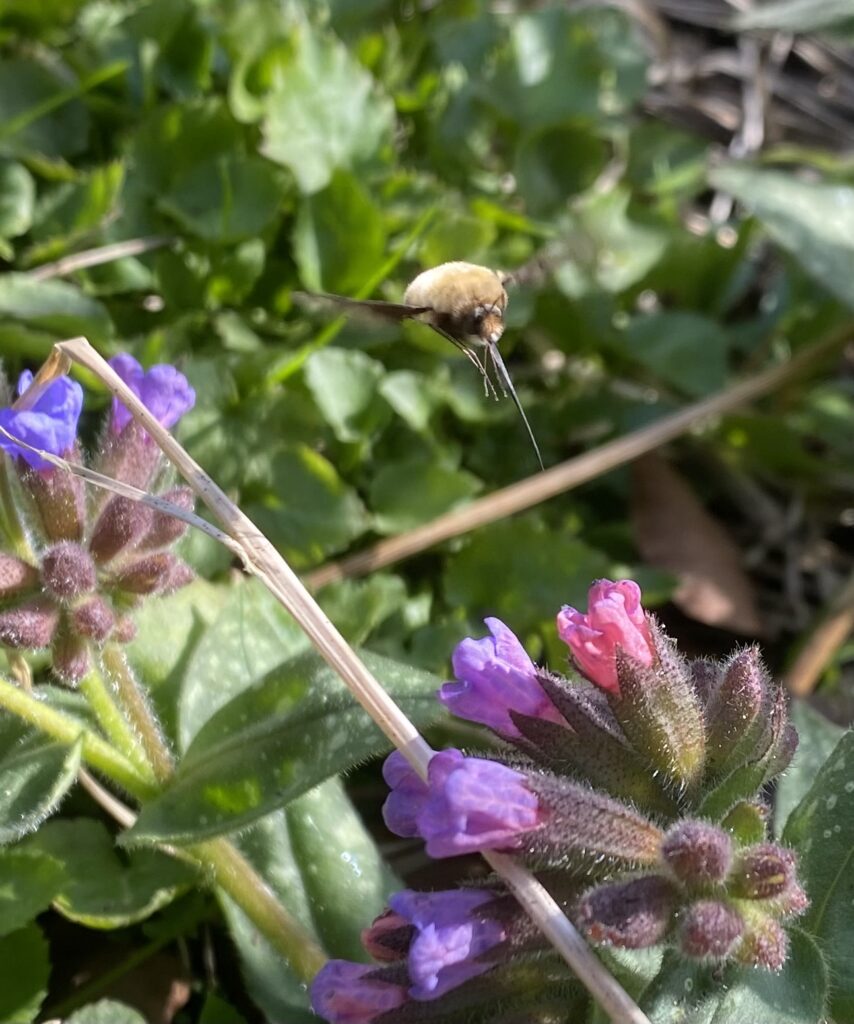Look out for the bee fly, a common spring garden pollinator that will feed on the nectar of primulas, aubrietia and pulmonaria. They fly fast and low and have a characteristic buzz. There are five species of these little flies that look like little flying shrews with their proboscis extended. They also resemble bumblebees and flit very fast from flower to flower, supping nectar. Their fuzzy bodies will attract pollen and their keen visits to spring flowers aids pollination.

Most female bee flies collect little stones and soil dust into a cavity under their abdomen, they coat their sticky eggs with this dust which makes them heavier. Then they fly bombing runs above the nests of mining bees, dropping their weighted eggs as they fly. Those that reach inside a mining bee nest will hatch and devour the solitary bee larvae and developing bees.
The most common species of this fluffy fast flying fly is the dark edged bee fly (Bombylius major) that has a brown band along the top of its wings, but there is a dotted bee-fly (Bombylius discolor) that as its name suggests have beautifully spotted wings. These are more common in southern UK but are spreading northwards due to climate change. Often they are flying too fast to spot the difference. These flies are parasites of several solitary bee and wasp species, mostly the ground nesting mining bees and including the Ashy Mining bee (Andrena cineraria).
How to spot
At first sight in spring you might think that this is a bumblebee feeding on spring flowers like aubrietia and primroses. The bee fly has quite a loud buzz and a very prominent proboscis sticking out, some people call them unicorn flies for this reason. It’s a fast flier and quite difficult to capture in photographs. If you can count the wings there will be two (not four like a bee) and it has quite large eyes on the top of its head. Usually active from February to June but most commonly seen in April. The timing of both the hosts and the parasite need to coincide for these flies to survive. Andrena, the mining bees emerge and start laying their eggs around the same time as the bee flies are on the wing.
How to attract
Bee fans might find it a little difficult thinking about how to help and support bee flies, now that they know they parasitise the nests of mining bees. But without a healthy population of their hosts, the bee flies cannot survive. The bee fly has a long proboscis and needs spring flowers with corresponding tubular corollas and access to nectaries like the aubrietia, lungwort, primroses and anchusa.
Join in with the annual #BeeFlyWatch and log your bee fly sightings to help scientists understand more about this creature.